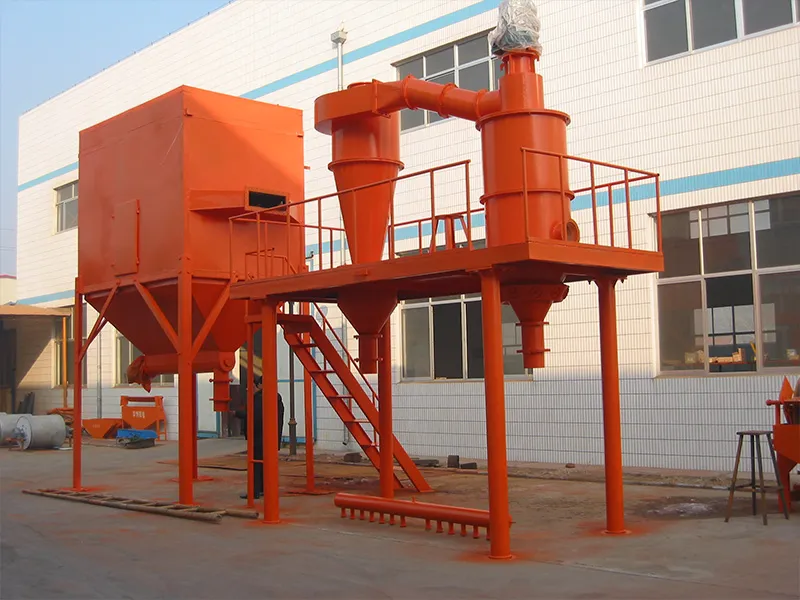Air classifiers are mechanical screening devices that separate materials by particle size through vibration. During operation, materials are subjected to forces including gravity, centrifugal force, and inertia as they pass through screening meshes. Larger particles pass through the mesh and fall into the collection bin below, while finer particles exit through the upper discharge port for subsequent conveying or packaging. Air cooling is a heat dissipation method that utilizes airflow to remove heat. In air classifiers, it is primarily applied in the following aspects:
Applications of Air Cooling in air classifiers
Motor Cooling
Classifier motors generate substantial heat during operation. Without proper cooling, this may lead to motor overheating, performance degradation, or even damage. Therefore, many air classifiers employ air cooling for motor temperature control. This is typically achieved by installing fans or blowers to direct airflow over the motor’s heat-generating components, effectively dissipating heat.gbufgk
Cooling of Critical Components
In addition to motors, other critical components such as bearings and gears may also require cooling. Air cooling enhances heat dissipation from these parts by increasing airflow, thereby improving operational stability and extending equipment service life.

Advantages and Limitations of Air Cooling
Advantages:
Simple Structure: Air cooling systems generally don’t require complex cooling setups – just the installation of fans or blowers.
Easy Maintenance: Maintenance mainly involves regular cleaning of fans and heat sinks.
Cost-Effective: Typically more economical than liquid cooling alternatives.
Limitations:
Limited Cooling Capacity: May not meet the demands of high-power density or high-temperature environments.
Noise Issues: Operation of fans/blowers may generate noticeable noise.
Implementation Recommendations for Air Cooling Systems
Selecting Appropriate Air Cooling Methods
Choose between natural convection or forced air cooling based on classifier type, operating environment, and cooling requirements. Small air classifiers may use natural convection, while larger units often require forced air cooling.
Optimizing Air Cooling System Design
Consider airflow paths, fan selection, and heat sink layout during design to improve cooling efficiency and reduce noise.
Regular System Maintenance
Perform periodic cleaning of fans and heat sinks, and inspect system operation status to ensure proper functioning.

Case Study: Air-Cooled Classifier Application
Taking a turbo classifier as an example, the following air cooling measures can be implemented:
Install an independent exhaust system with capacity matching the classifier’s cooling requirements.
Optimize heat dissipation structures by adding cooling fins and improving airflow duct design.
Implement regular maintenance schedules to ensure system reliability.
Conclusion
Air classifiers can indeed be equipped with air cooling systems. However, appropriate cooling methods should be selected based on specific requirements, with optimized system design and regular maintenance. Meanwhile, the limitations of air cooling and potential noise issues should be properly addressed.
À Machines à poudre épiques, we specialize in developing high-performance air classifiers with optimized thermal management systems. Whether you’re working with powder coatings, battery materials, or industrial additives, our classification technologies deliver precise particle separation with reliable temperature control. Contact us today to discover how we can enhance your classification processes!

